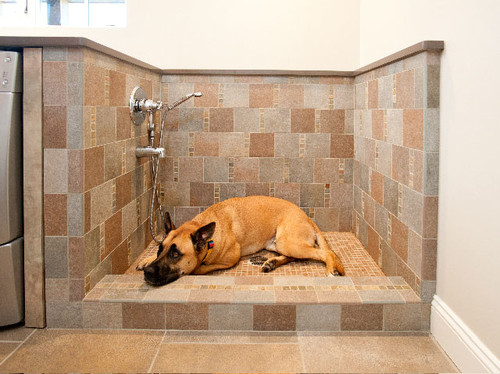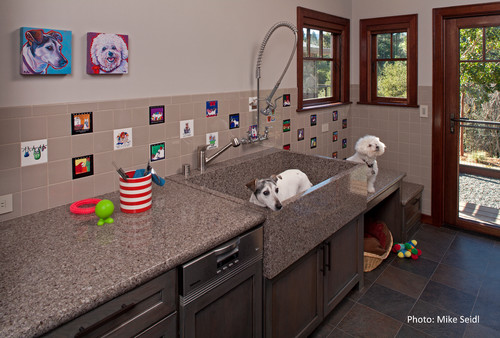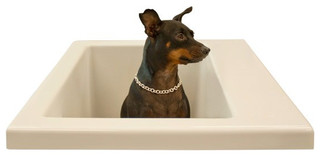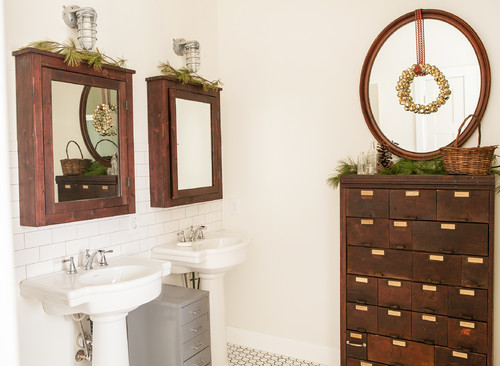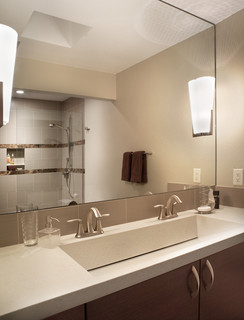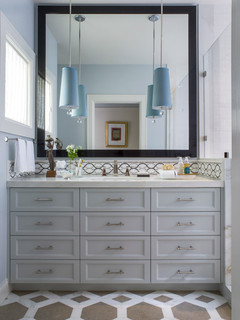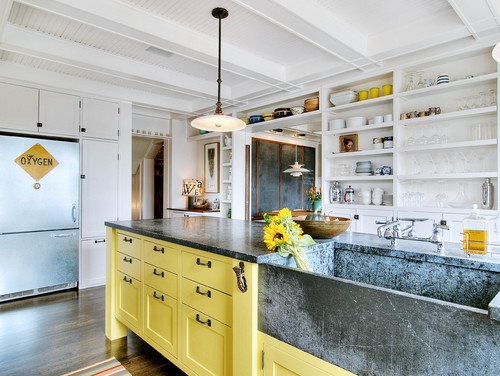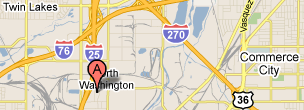15 Doggone-Good Tips for a Pet Washing Station
 Wednesday, November 13, 2013 at 10:32AM
Wednesday, November 13, 2013 at 10:32AM Article By: Becky Harris
This is going to sound harsh, but your dog stinks. Don't feel bad — it's natural, and you are nice to let him swim in that creek and run in the mud and roll around in yucky things. You don't notice anymore, because your schnoz is used to it. But when I come over to visit, the smell of your dog's bed and the smell on my hand after I pet him is very noticeable, so chances are, the same smell is in your carpets, car and any furniture Fido lounges on.
You probably mean to wash the dog more often, but it's a pain in the neck. Large dogs are tough to get into bathtubs, the big shake afterward makes a mess, and the whole thing can be quite an ordeal.
Now that we've got that out of the way, a home pet washing station isn't looking so crazy. In fact, you can use them for other things, too. A builder who's been adding them for years, Vincent Longo, says that one client uses his pet care station for cleaning dirty golf clubs, gardening tools and even the kids after a busy day making mud pies.
Whatever your thoughts about pet wash stations, there's no denying their popularity. If you're thinking about adding one, here are some ideas to consider.
Incorporate the washing station into the mudroom. Mudrooms are a very popular spot for dog wash stations. Dogs enter from the back or side door, and their muddy paws never make it into the rest of the house.
Include a handheld showerhead or sprayer. Not only will it help you get your dog's entire bod nice and clean, but it will also let you do a quick paws-only wash.
Be prepared for the big shake. Anyone who has ever washed dogs knows that afterward they shake off the water with gusto and get the entire area wet (including the person doing the washing). Having a surround and floor that can stand up to water will keep the big shake from damaging drywall and floors.
If your dog is the type that runs around the house in crazy circles after a bath, all I can recommend is shutting the mudroom door until Sparky dries off and calms down, or else letting him into the garage for the runaround.
Go bigger with the drain. Longo recommends using a 3-inch drain in a pet washing station. It will handle dog hair better than the standard 1½- to 2-inch shower drain. He also recommends adding a hair filter over the drain.
Clearly, this dog loves the pet wash station and is just begging for a rinse.
Consider an elevated dog bath for smaller pets. It will be easier on your back and knees in the long run, as long as your dog is willing and able to jump into it, or you don't have a problem lifting your pet into place.
Step it up. In this clever design, the counters double as steps up to the basin. The middle step serves as a drying station and has room for a cozy pet bed underneath.
For smaller dogs a large utility sink plus a sprayer is all you need.
Use what the pros use. You can find professional bathing stations complete with ladders or ramps at places like ProGroom.
Combine gardening and pet grooming. Pet washers are also great places to water plants, rinse off mucky Wellies and clean your gardening tools.
Incorporate your own style. This custom dog bath utilizes vintage tiles that the homeowner had been collecting for years.
Have drying towels handy. An overhead drying rack is a handy spot for drying dog towels as well as laundry. If you utilize this kind of system, be sure to remove your people laundry before the big shake.
Embrace the theme. This area celebrates dogs in the wallpaper and has plenty of shelves for dog supplies.
Consider going high-end. Do you and your pet have luxurious tastes? If so, try a dog-specific tub. When family-owned company Hydro Systemsdecided to dip into dog bath design, the owners collaborated with their groomer of more than 20 years, adding features like skidproofing to prevent slips and slides, and even an optional jetted whirlpool system.
Is your dog the spa type? Do tell, because this idea is certainly new to me, and I can't quite wrap my head around it. Unless the dog's name is Zsa Zsa. Then it makes sense. (Seriously, though, the folks who designed this tub and added the spa option say it's a matter of personality on a case-by-case basis.)
This model is for smaller dogs. I included it because a photo of a dog sitting in its own personal bath wearing a bling-bling necklace simply must be shared.
Think about storage for supplies. Just like a human shower area, this one has handy shelves for dog shampoo and sponges.
Take it outside. Homeowners are increasingly incorporating pet washing stations into their outdoor showers. All it takes is a handheld sprayer or showerhead that can reach down to the ground. Rinse off muddy paws here before they can get inside and muck up your rugs.
Provide a clean path to the door. A concrete, gravel or stone walkway will prevent your dog from dirtying up his paws on the way in from an outdoor wash. Unless, of course, the dog breaks free and does that crazy circle thing out in the yard.


















